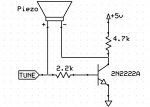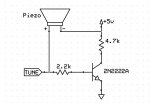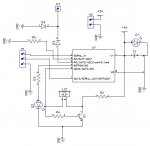Hello all,
So I have been using a small piezo buzzer I found a long time ago from a basic stamp II kit (http://www.parallax.com/StoreSearchResults/tabid/768/List/0/SortField/4/ProductID/106/Default.aspx?txtSearch=piezo+speaker). It works fine and the tune command works well with it. However, I would like to be a bit louder. Anyone know where I can buy a louder one from? Or am I going to have use an OPAMP and amplify the signal from the PICAXE to the piezo? A non-inverting OPAMP? http://www.electronics-tutorials.ws/opamp/opamp_3.html
So I have been using a small piezo buzzer I found a long time ago from a basic stamp II kit (http://www.parallax.com/StoreSearchResults/tabid/768/List/0/SortField/4/ProductID/106/Default.aspx?txtSearch=piezo+speaker). It works fine and the tune command works well with it. However, I would like to be a bit louder. Anyone know where I can buy a louder one from? Or am I going to have use an OPAMP and amplify the signal from the PICAXE to the piezo? A non-inverting OPAMP? http://www.electronics-tutorials.ws/opamp/opamp_3.html




